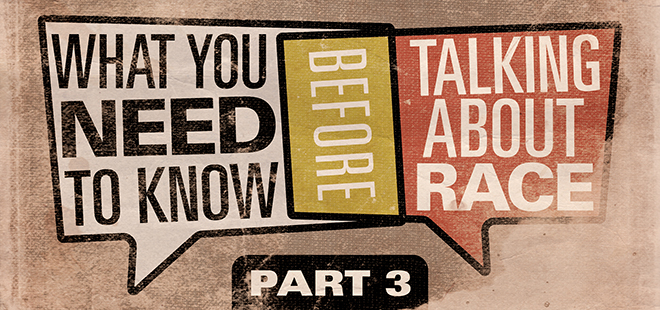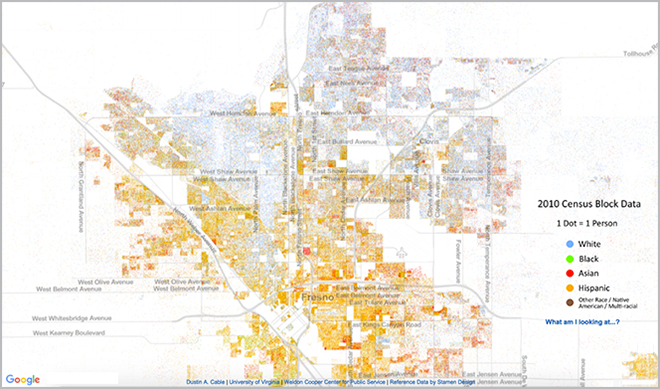This article was imported from our previous website, which many have broken some of the content. We apologize in advance for any strange formatting or broken links you may find.

Proximity and Race
So far, we’ve looked at what we should learn about ourselves and about the idea of learning to listen to other people’s perspectives, but as we continue in our series on racial justice and racial reconciliation, I want to add in one more element that I think is essential as you begin this journey: proximity. You cannot learn to hear other people’s perspectives unless you are around other people's perspectives.
Proximity can be defined as, "nearness in space, time, or relationship.” Stated simply, who you are around affects how you feel, think, and engage. Sounds simple, but the implications of it are profound and often not considered.
People are passionate about the things they care about, so when your mother, father, or even your own immigration or living status is in jeopardy, you learn about and begin to care about these issues. Or when you have a family member who has served overseas in Afghanistan and comes back suffering from PTSD and the poor support system we have for veterans, you begin to become passionate, not just about patriotism and clapping for a veteran at a game, but actually coming alongside them after they have served.
I use these brief examples to drive home the point, but one of the biggest challenges is that we are becoming a more divided and isolated society. Social media is one major factor, but economic factors are also at play.
Take a recent study done by the Martin Prosperity Institute; it found that Fresno was the 15th most wealth-segregated metro area and the 9th most educationally segregated metro area in the top 350 largest metros in the United States.[1] Or check out this racial map of the Fresno area.[2] Notice anything?

We are becoming increasingly divided and isolated from different perspectives.
When you come from a similar cultural, ethnic, socioeconomic and political sphere group, something begins to happen. Your views and perspectives of the world are only challenged by straw man arguments and misrepresentations, and you are actually experiencing very little of the world God created.
Proximity to the “other” matters.
When you live or interact with kind, sensitive and overall wonderful Muslim women, you have to begin to challenge your perspective and reconsider how to engage the image you may have had in your head of all Muslims being terrorists.
But there is good news. Here are 3 ways you can change your proximity:
- Change What You Read and Watch
Be intentional about adding different voices in. Read blogs, social media accounts, books, etc., that are outside of your social category. Watch a different news station than you would normally gravitate to. Use a tool like Escape Your Bubble on Facebook to see news from the “other” side. Trust me, there are good arguments and good people there too!
- Open Your Eyes
Your neighborhood or community is more diverse than you recognize, so aim to be more aware of who’s around you. I recently used Uber in Bakersfield, California. Bakersfield is not known for being the bastion of globalism, but in my last three trips I have had fascinating conversations with my drivers who were first generation immigrants from Pakistan, Philippines and Mexico. The last driver told me about three KKK members who got into his car and what he learned from them!
- Change Your Physical Proximity
Reconsider where you shop, where you eat, and even where you live. I have one friend who lives in Clovis, but who has been very intentional to shop, recreate and even own homes in a poorer community. His heart is to be a fantastic landlord, invest in our city and build relationships with others.
The good news is you can do this. Small, but intentional steps make it possible. Recognize you must be intentional because the gravitational pull is to sameness, but this journey to be a part of racial reconciliation and push larger racial justice is sustained with proximity. You need it, so start to cultivate it now!
Start now
- Make a list of the people you know and have strong relationships with who are different than you (politically, ethnically, socioeconomically. etc.).
- Take a quiz to learn your Proximity Index with the poor in our community.
[1] http://martinprosperity.org/content/segregated-city/
[2] Racial Dot Map Image Copyright, 2013, Weldon Cooper Center for Public Service, Rector and Visitors of the University of Virginia (Dustin A. Cable, creator). Used with permission. https://demographics.virginia.edu/DotMap/index.html